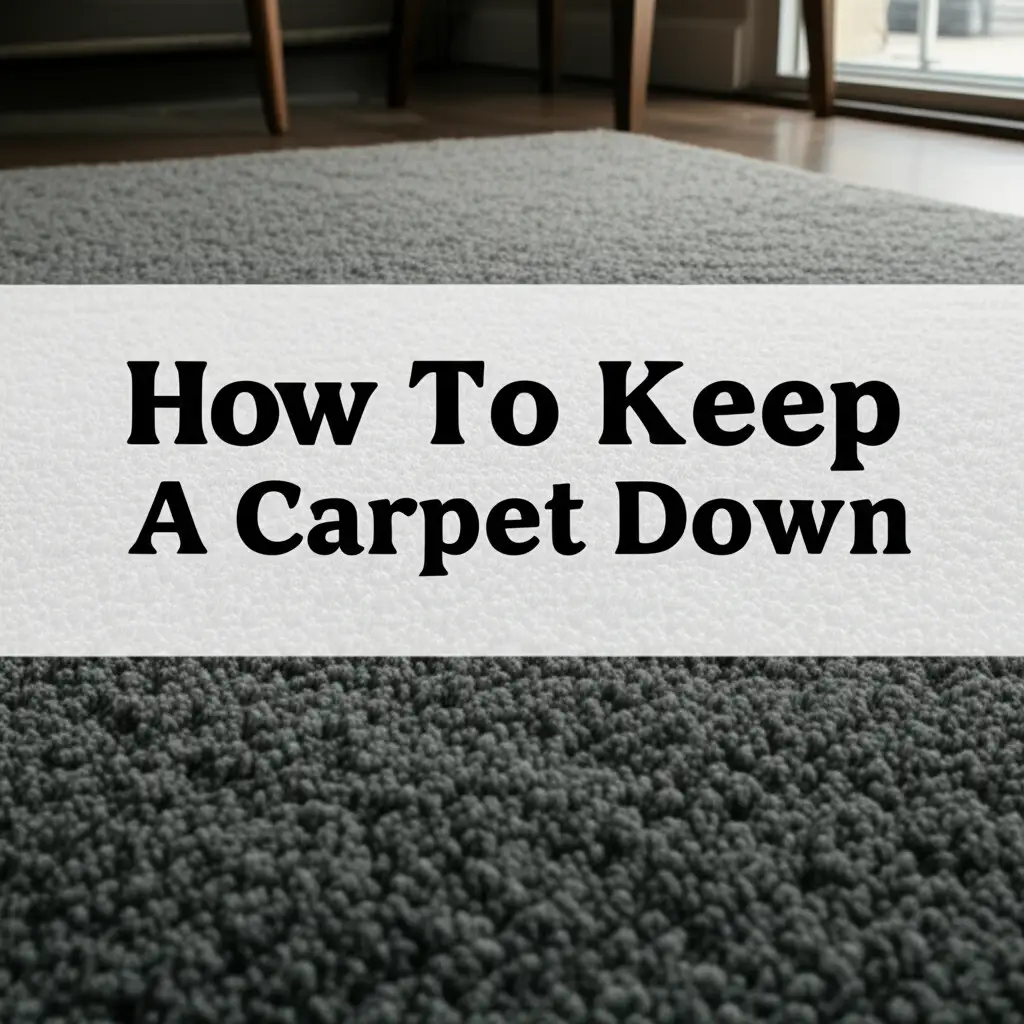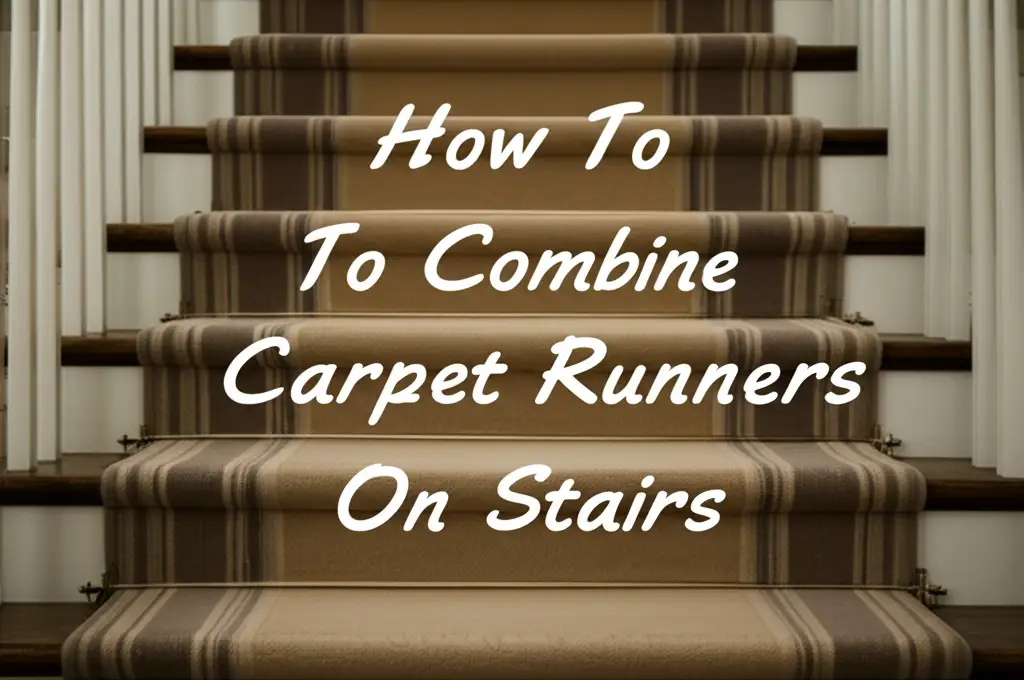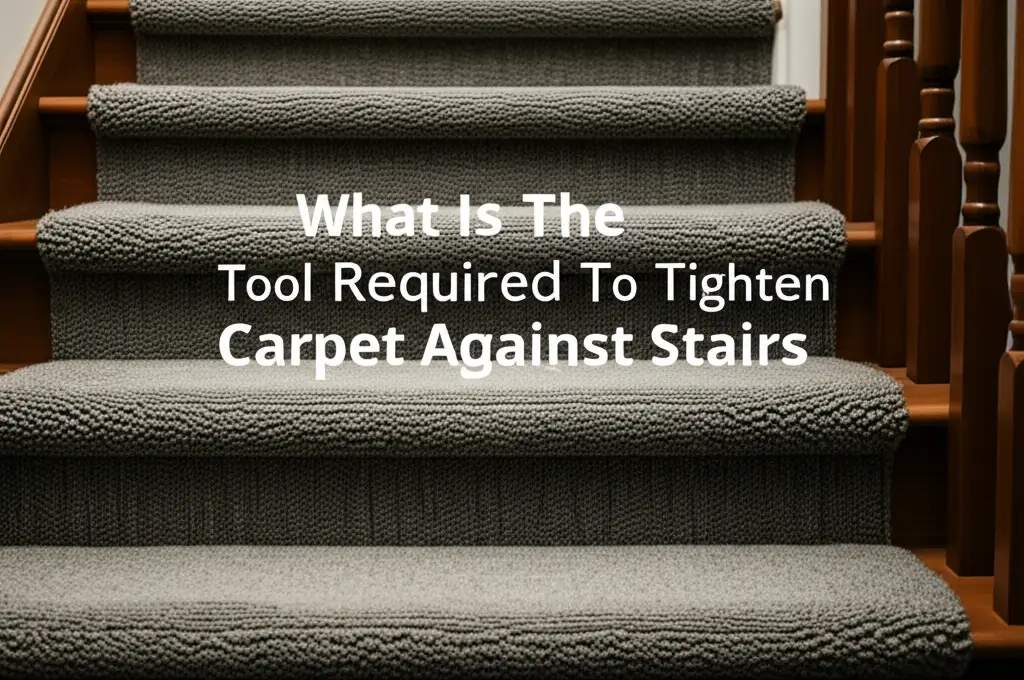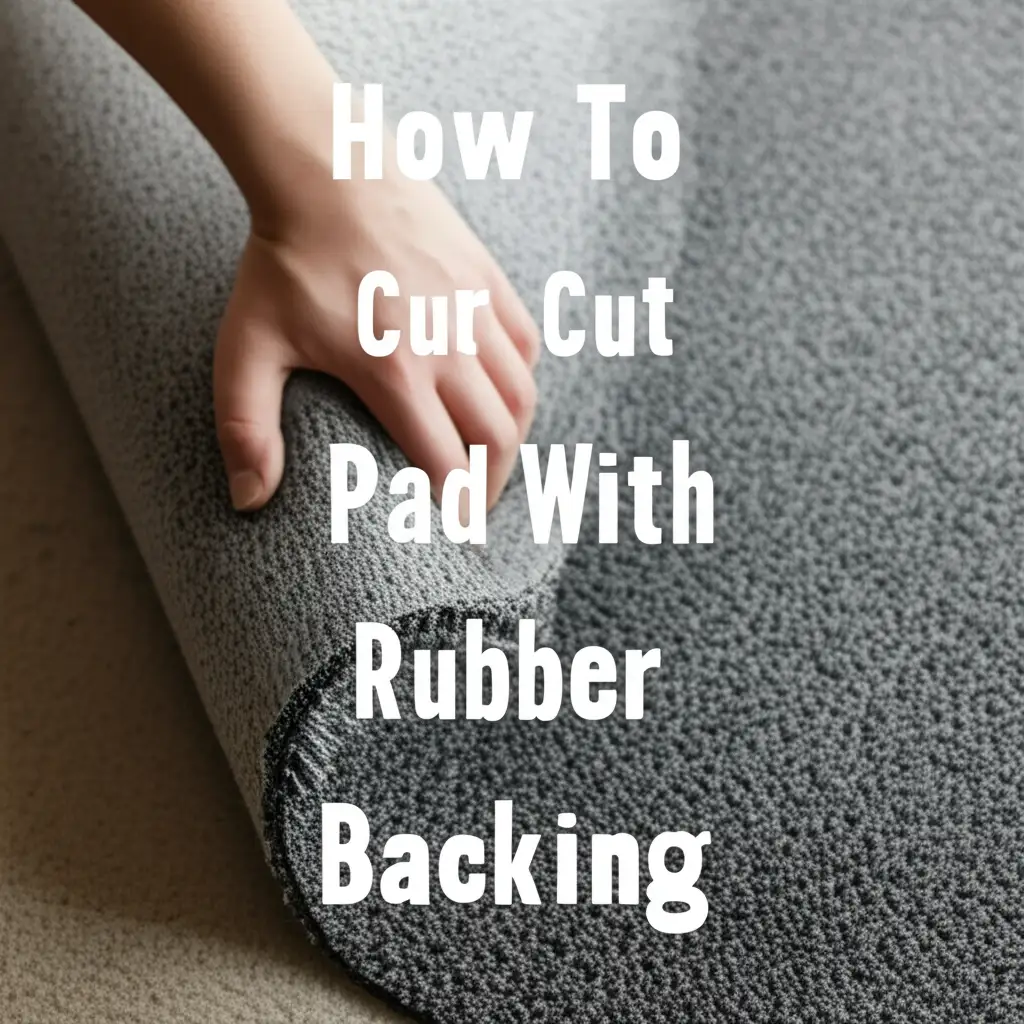· Mason Everett · Home Improvement · 15 min read
Do We Need Glue For Stair Runner Carpet
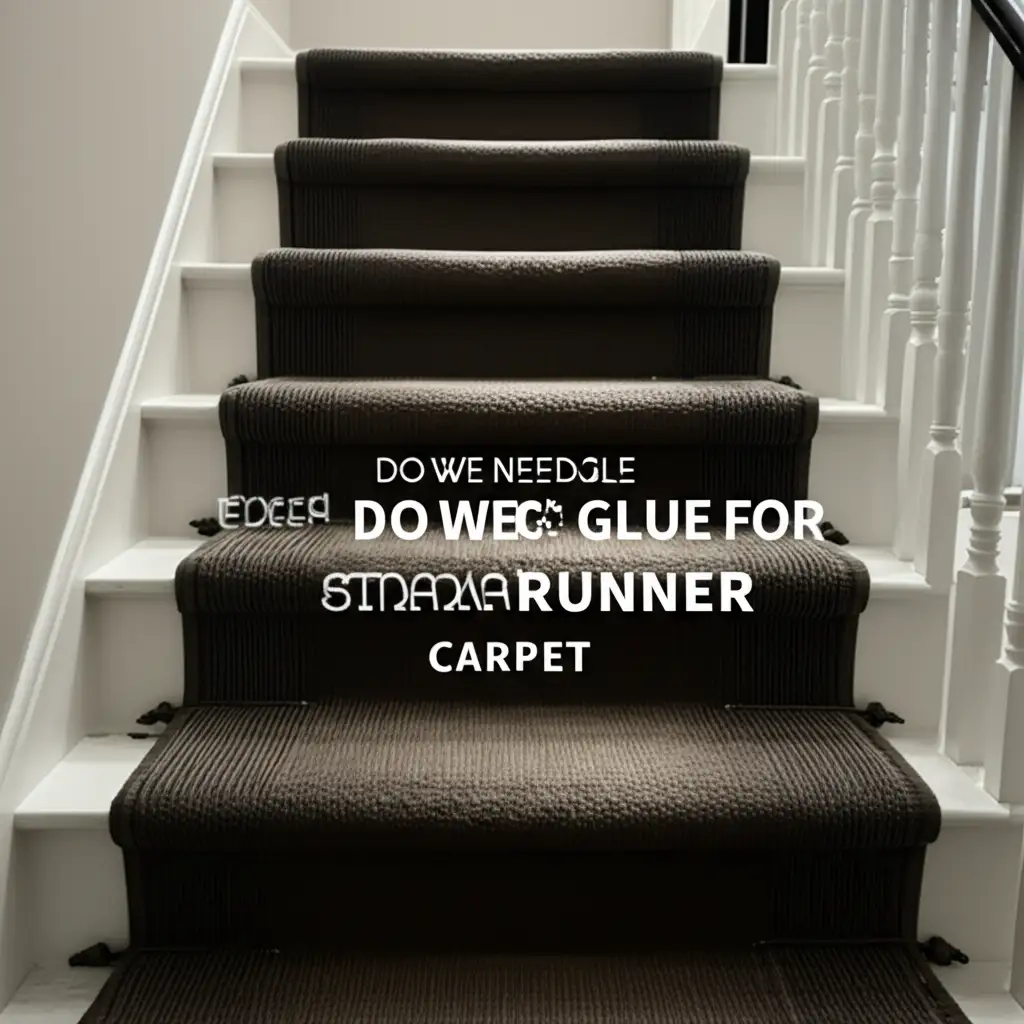
Do We Need Glue For Stair Runner Carpet?
Imagine walking up your stairs feeling a soft, plush runner underfoot. It adds comfort and reduces noise. But when planning this update, a common question arises: “Do we need glue for stair runner carpet?” This question is important for every homeowner. The answer helps you decide on the best installation method. We will explore various securing options today. We will see if glue is necessary or if other methods are better.
Installing a stair runner carpet involves several considerations. These include material choice, style, and installation technique. Many people think about using glue to hold the runner in place. However, traditional methods often provide a secure fit without permanent adhesives. Understanding these options ensures a successful and lasting stair runner installation. This article guides you through different methods. It helps you choose the best approach for your home.
Takeaway
- Glue is rarely the primary method for securing residential stair runner carpet.
- Tack strips and staples offer the most common and effective installation.
- These methods allow for easier removal and protect your stairs.
- Consider glue only for very specific, often commercial, high-traffic applications.
- Proper planning and tools ensure a stable, glue-free runner.
You typically do not need glue for residential stair runner carpet installation. Most installations rely on tack strips and staples for a secure, long-lasting fit. Glue is often reserved for commercial settings or specific types of carpet and subfloor, offering a more permanent solution.
The Role of Adhesives in Carpet Installation
Adhesives play a significant role in many carpet installations. Wall-to-wall carpeting often uses glue. This creates a very permanent bond with the subfloor. Glue ensures the entire carpet area remains flat and stable. This prevents movement and buckling.
When we talk about stair runner carpet, the situation changes. A runner covers only a portion of the stair treads. It leaves the sides exposed. The main goal for a stair runner is to stay fixed without slipping. It must also look neat and professional. Using glue for a runner can seem like an obvious choice. It appears to offer maximum security. However, this method brings some notable drawbacks.
Residential applications rarely benefit from glue on runners. Glue makes future removal difficult. It can damage the underlying stair surface. This damage is especially true for beautiful hardwood stairs. Professionals usually avoid glue for this reason. They prefer methods that allow for maintenance or change. These methods keep the original stairs intact.
Consider the permanence of glue. Once applied, it is hard to undo. Removing a glued runner often means scraping away adhesive residue. This process is time-consuming and messy. It might require sanding or refinishing your stairs afterward. For these reasons, installers look for alternatives. They want secure methods that are also less invasive. We need to explore these methods.
Traditional Methods for Securing Stair Runners
For residential stair runner carpet installation, traditional methods are widely favored. These methods do not use glue. They instead rely on mechanical fasteners. Tack strips and staples are the primary tools here. They create a very secure attachment without permanent adhesives. This approach protects the original stair surface.
Tack strips are wooden strips with sharp, angled pins. Installers place these strips at the back of each stair tread. They also put them at the base of each riser. When the carpet is pressed onto the tack strips, the pins grab the carpet backing. This holds it tightly in place. The tension created keeps the runner taut. It prevents any movement or bunching. Tack strips are very effective for holding the carpet securely.
Staples provide additional reinforcement. Installers use a professional-grade staple gun. They place staples along the edges of the runner. They also place them at critical points, such as where the runner wraps around the stair nose. Staples prevent the runner from shifting sideways. They also keep the edges neat. The combination of tack strips and staples ensures a robust installation. This setup means your runner stays put. It stays put even with heavy foot traffic.
These traditional methods offer significant benefits. They allow for easier future removal. If you want to change your runner, it comes off without major damage. This is a huge advantage over glue. It preserves the beauty of your wooden stairs. It also makes cleaning under the runner possible. Tack strips and staples provide a strong, stable, and reversible solution. They are the go-to choice for most stair runner projects. You can learn more about securing carpets in general by reading our guide on how to keep a carpet down. This approach ensures both stability and flexibility for your home.
Benefits of Traditional Installation
- Preservation of Stairs: These methods do not apply sticky substances to your valuable stairs.
- Easier Removal: Changing or cleaning the runner is simple. The carpet lifts away without residue.
- Cost-Effective: Less time and fewer specialized chemicals are needed for installation and future removal.
- Strong Hold: The combination of tack strips and staples creates a very firm grip. The runner stays in place.
These benefits highlight why professionals prefer traditional techniques. They offer a secure fit with minimal long-term commitment.
When Might Glue Be Considered for Stair Runners?
While traditional methods dominate residential stair runner installations, there are specific situations where glue might enter the picture. These instances are less common for homes. They mostly apply to commercial settings or very unique conditions. Understanding these limited cases helps clarify the role of adhesives.
One primary scenario for glue is in high-traffic commercial environments. Think of busy office buildings, hotels, or public spaces. In these locations, the stair runner undergoes constant, heavy use. Extreme traffic might put too much stress on staples and tack strips alone. Glue provides an extra layer of permanence. It locks the carpet down completely. This reduces the chance of wear and tear leading to loosening. It also minimizes trip hazards in public areas.
Another consideration is the type of subfloor or stair material. Some non-wood stair constructions might not accept staples or tack strips well. For example, metal or concrete stairs require different anchoring solutions. In such cases, a specialized carpet adhesive designed for those materials becomes necessary. The adhesive creates a bond where mechanical fasteners cannot. This ensures the runner stays attached.
Finally, some specific carpet backings might be better suited for glue. Certain very thin or unusual carpet materials may not hold well with staples. They might tear or stretch. However, this is rare for standard stair runner products. Most runners are designed to work perfectly with tack strips and staples.
It is important to remember the significant drawbacks of glue. It makes removal extremely difficult. It can damage the underlying surface, requiring extensive repair if the runner ever needs changing. For residential use, these downsides almost always outweigh any perceived benefits. Unless you have an unusual commercial need or specific non-wood stairs, glue for a stair runner is typically not the best choice.
The Benefits of Glue-Free Stair Runner Installation
Choosing a glue-free installation for your stair runner carpet offers many advantages. These benefits extend beyond just the initial setup. They impact the long-term care and appearance of your stairs. I often advise clients to avoid glue for these reasons.
One major benefit is the protection of your original staircase. Many homes feature beautiful hardwood stairs. Applying glue directly to these surfaces can cause irreparable damage. Glue can leave sticky residue. It can lift wood finishes. It can even permanently stain the wood. Using tack strips and staples means the only contact points are tiny holes. These holes are easily filled if you ever remove the runner. This preserves the value and aesthetic of your underlying stairs. This is especially important if you eventually decide to take your carpet runner to wood floor for a fully exposed look.
Another great advantage is the ease of replacement or repair. Runners wear out over time. They might get stained or damaged. If your runner is glued down, replacing it becomes a big project. You have to scrape off the old glue. You might need to repair the stair surface. With a glue-free installation, replacement is straightforward. You simply remove the old staples and tack strips. Then you install the new runner. This saves time and money. It makes future updates less daunting.
Cleaning and maintenance also become simpler. A glue-free runner can be lifted slightly. This allows for thorough cleaning underneath. You can remove trapped dust or debris. This keeps your stairs cleaner and more hygienic. For example, if you spill something, you might be able to lift the edge to clean the subfloor. This flexibility is not possible with a glued-down runner.
Finally, glue-free methods often mean a DIY-friendly project. You can achieve professional results with the right tools and patience. This empowers homeowners to tackle the project themselves. They avoid the complexities and mess associated with adhesives. It is a cleaner, safer, and more flexible approach for most homes.
Installation Techniques Without Glue
Installing a stair runner without glue relies on precision and specific tools. I have seen many successful DIY projects using these techniques. They provide a stable and beautiful result. The process ensures the runner stays securely in place.
First, you need to prepare the stairs. Clean them thoroughly. Make sure they are free of dust and debris. Then, you will measure your runner. Knowing how long is a carpet runner and how many square feet in 12 step runner rug helps you get the right amount of carpet. Proper measurement prevents waste. It ensures enough material for each step.
Next, you will install the carpet padding or underlayment. This padding goes on each stair tread. It adds comfort underfoot. It also extends the life of your runner. Cut the padding slightly narrower than your runner. This ensures it remains hidden. Secure the padding with a few staples.
Then, position your tack strips. For a waterfall installation (where the carpet flows directly over the nose), place one tack strip at the back of the tread. For a cap-and-band installation (where the carpet wraps tightly around the nose), place one tack strip at the back of the tread and another at the bottom of the riser. The pins of the tack strip should point towards the riser. Nail these strips firmly into the wood.
Now, begin laying the runner from the top of the stairs. Start by stapling the top edge of the runner under the lip of the top landing. Unroll the runner down the first tread. Press it firmly onto the tack strip. Use a knee kicker to stretch the carpet tight. This stretching is crucial for a smooth, wrinkle-free finish. Work the carpet over the stair nose. Ensure it wraps tightly. Then staple it securely underneath the nose. You will use a hand stapler or an electric stapler for this. Place staples every few inches along the underside of the nose.
Repeat this process for each step. Always stretch the carpet tightly before stapling. This prevents slack and movement. Ensure the runner stays centered on each step. A consistent border width on both sides looks best. Cut the runner precisely at the bottom landing. Staple the final edge securely. These techniques create a professional-looking, durable stair runner. They do not require any messy glue.
Choosing the Right Stair Runner Material
Selecting the correct stair runner material is just as important as the installation method. The material impacts durability, ease of cleaning, and overall appearance. It also subtly influences how well a glue-free installation holds up. I always guide clients to consider their lifestyle when making this choice.
Durability is a key factor. Stairs are high-traffic areas. The carpet needs to withstand constant footfall. Wool is an excellent choice for runners. It is naturally resilient. It resists crushing and soiling. Synthetic fibers like nylon are also very durable. They offer good stain resistance. Olefin or polypropylene carpets are more budget-friendly. They work well for moderate traffic. Avoid very plush or shaggy carpets for stairs. They can be trip hazards. They also show wear quickly.
Cleanability is another major consideration. Spills and dirt are common on stairs. A material that is easy to clean saves you effort. Nylon and polyester carpets are known for their stain resistance. They are good options for families with children or pets. Wool carpets require specific cleaning methods but hide dirt well. Consider the fiber type and weave. Tighter, lower pile carpets are generally easier to vacuum and spot clean.
Style and aesthetics matter greatly. The runner should complement your home’s decor. You can choose patterns or solid colors. Patterns often hide dirt better. Solids create a more modern or minimalist look. Consider the texture and height of the pile. A lower profile runner is safer and easier to maintain on stairs. It also fits more snugly.
The material choice affects installation. Denser carpets hold staples better. Thicker backings provide more grip for tack strips. Lighter, thinner carpets might need more staples for security. Always verify the carpet type is suitable for stair installation. A robust material combined with glue-free techniques ensures a long-lasting and beautiful stair runner.
Professional vs. DIY Stair Runner Installation
Deciding between a professional installation and a DIY approach is a common dilemma. Both options have pros and cons. Your skill level, budget, and desired outcome will guide this choice. I have seen both successful DIY projects and poorly executed ones.
Hiring a professional installer offers several benefits. Professionals have specialized tools and extensive experience. They ensure precise measurements. They cut the carpet accurately. They achieve a perfectly taut and secure fit. They handle complex stair layouts, like winding or pie-shaped steps, with ease. A professional installation typically looks flawless. It lasts longer. They also know the best practices for each carpet type. If you value perfection and want to avoid potential mistakes, a professional is the right choice. They often provide guarantees for their work.
On the other hand, a DIY installation can save you money. If you are handy with tools and enjoy home projects, installing a stair runner yourself is possible. You will need a few specialized tools. These include a knee kicker, a carpet cutter, and a heavy-duty stapler. Patience and attention to detail are crucial. Watch tutorials and read guides before starting. Allow ample time for the project. DIY is best for straight staircases. It is also good for individuals with prior experience in similar home improvement tasks.
Consider the complexity of your stairs. Simple, straight stairs are more forgiving for DIY. Curved stairs or stairs with landings that require custom cuts are much harder. Mistakes in measuring or cutting can be costly. You might waste expensive carpet material. A poorly installed runner can also be a tripping hazard.
Ultimately, the choice depends on your comfort level. If you are confident in your abilities and have the right tools, DIY can be rewarding. If you prefer a perfect, worry-free installation or have complex stairs, hiring a professional is a wise investment. They ensure the job is done right the first time.
FAQ Section
Do I need padding under a stair runner?
Yes, padding is highly recommended under a stair runner. It adds comfort and reduces noise. Padding also acts as a cushion for the carpet fibers. This extends the lifespan of your runner by absorbing impact. It also helps the runner maintain its shape and appearance over time.
Can I install a stair runner without tack strips?
You can install a stair runner without traditional tack strips if you use a very heavy-duty stapler and plenty of staples. However, tack strips provide a superior, more consistent tension across the carpet. They help keep the runner taut and prevent shifting better than staples alone. For the most secure and professional result, use tack strips.
How often should a stair runner be replaced?
The lifespan of a stair runner varies greatly. It depends on the carpet material, traffic level, and installation quality. A high-quality, well-maintained runner in a residential setting might last 10-15 years or more. Low-quality carpet or very heavy traffic can reduce this to 5-7 years. Regular vacuuming and prompt spot cleaning help extend its life.
What tools do I need to install a stair runner without glue?
You will need several tools for a glue-free stair runner installation. These include a measuring tape, utility knife, heavy-duty stapler (manual or electric), staples, a knee kicker, and a carpet trimmer. You will also need carpet tack strips and padding. These tools ensure a professional and secure finish.
Will a stair runner damage my hardwood stairs?
A properly installed stair runner using tack strips and staples will cause minimal damage to hardwood stairs. The small holes made by nails for tack strips and staples are tiny. They are easily filled or sanded if the runner is removed. This method preserves your hardwood better than glue. Glue can cause significant damage to the finish or wood.
Can a stair runner prevent slips?
Yes, a stair runner can significantly improve safety by providing traction. It reduces the risk of slipping on smooth stair surfaces like hardwood or tile. The carpet material offers a gripping surface for feet. This makes going up and down stairs safer, especially for children, the elderly, or pets.
Conclusion
When considering “Do we need glue for stair runner carpet?”, the answer for most homes is clear: no. Traditional installation methods, primarily using tack strips and staples, offer a superior solution. These techniques secure your stair runner carpet effectively. They ensure stability and safety. More importantly, they protect the beauty and integrity of your underlying stairs. This is a significant advantage, especially if you have valuable hardwood.
Opting for a glue-free installation provides flexibility. It makes future replacements or repairs much easier. It avoids the messy, irreversible commitment of adhesives. This approach allows your home to evolve without costly damage. It ensures your stairs remain a beautiful, functional part of your home. Always prioritize proper measurement and the right tools for a professional finish.
Whether you choose to tackle the project yourself or hire a professional, understanding these methods is key. A well-installed stair runner adds comfort, reduces noise, and enhances your home’s aesthetic. Make the informed choice for your home. Embrace the benefits of a secure, glue-free stair runner carpet.


